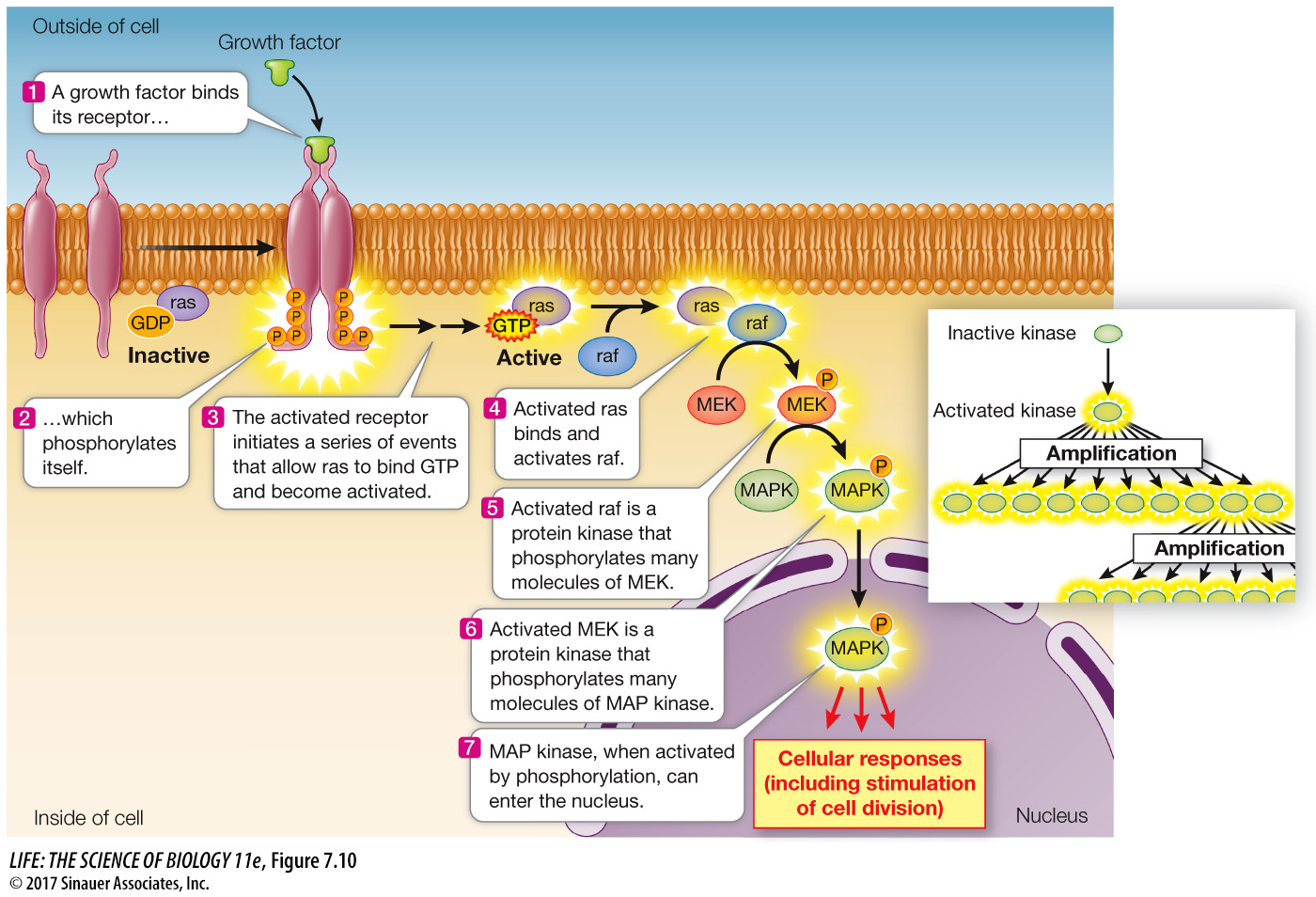The cell amplifies its response to ligand binding
Scientists worked out the signal transduction pathway for one growth factor by studying a cell that went wrong. Many human bladder cancers contain an abnormal form of a protein called ras (so named because a similar protein was previously isolated from a rat sarcoma tumor). Investigations of these bladder cancers showed that ras was a G protein. Recall that G proteins function as switches with “on” and “off” states. In the “off” state, G protein is bound to GDP, whereas in the “on” state the protein becomes bound to GTP. The abnormal form of the ras protein under study was always active because it was permanently bound to GTP and thus caused continuous cell division (Figure 7.9).

Animation 7.2 Signal Transduction and Cancer
www.life11e.com/
Other cancer cells have abnormalities in different parts of the same signal transduction pathway. By comparing the defects in abnormal cells with the normal signaling process in non-
At each step in the cascade of events, the signal is amplified, because each newly activated protein kinase is an enzyme that can catalyze the phosphorylation of many target proteins (see Figure 7.10, steps 5 and 6).
The information from a signal that originally arrived at the cell membrane is communicated to the nucleus, where the expression of multiple genes is often modified.
The multitude of steps provides some specificity to the process.
Different target proteins at each step in the cascade can provide variation in the response.
139
focus: key figure

Question
Q: Sorafenib is a drug that was designed to inhibit raf, which is very active in kidney cancer. How does this drug work on the protein kinase cascade?
Raf activity is an early event in the protein kinase cascade that stimulates cell division in kidney cancer. Blockage of raf prevents phosphorylation of MEK, and all the subsequent steps in the protein kinase cascade. Cell division is reduced and the tumor shrinks.